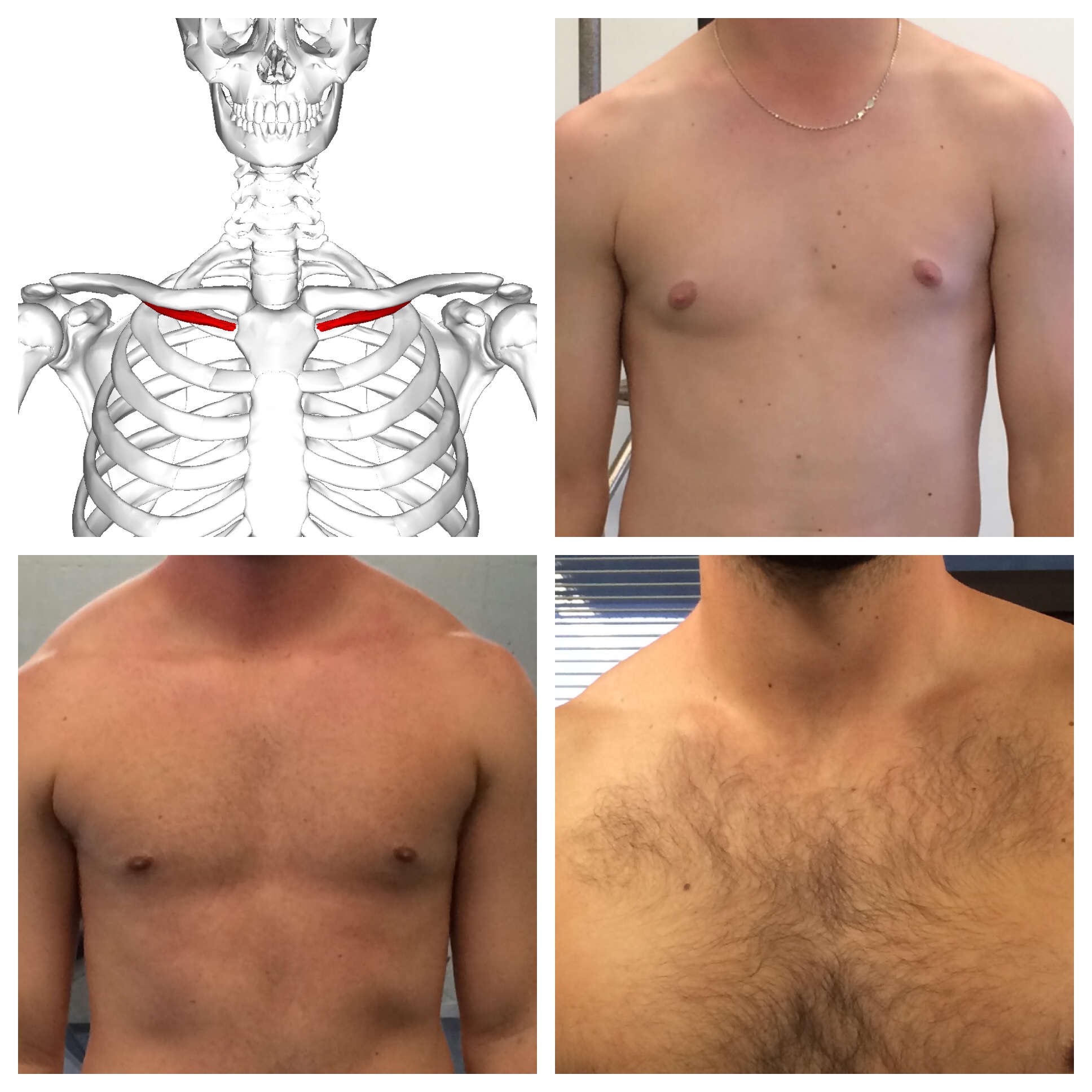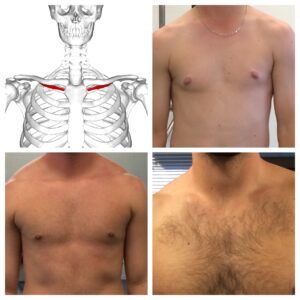
Making Sense of Subclavius
In light of a recent question I got from a customer of my Thoracic Outlet Syndrome course, I thought I’d highlight a really common trigger point in throwers. Look no further than subclavius. It’s stuck right between the clavicle (collarbone) and first rib (highlighted in red here).
In normal posture, the clavicle should have a slight upslope. In many throwers who sit in scapular depression, downward rotation, and/or anterior tilt, the clavicle is pulled down even more, as the collarbone interacts with the shoulder blade at the acromioclavicular joint. Wherever the scapula goes, the collarbone goes.
Here’s the problem: with overhead motion, the clavicle actually needs to rotate up as well – and a short, dense, fibrotic subclavius will restrict that movement.
Making matters worse, the subclavius works with the often hypertonic scalenes to elevate the first rib – so this muscle gets smashed from the bottom while it’s already bunched up from the top. And don’t forget that there are important nerve and vascular structures that course between these two bones as well, so subclavius is an anatomical structure that can’t be ignored anytime a thoracic outlet syndrome diagnosis is considered.
From a referral standpoint, trigger points in subclavius can lead to symptoms in the anterior shoulder, biceps muscle belly, and lateral forearm all the way down to the thumb side of the hand. It’s also not uncommon to see the clavicular angle increase (upslope) after good manual therapy on subclavius in someone with a low shoulder.
In short, don’t overlook this muscle just because you’ve never heard of it or it’s really small. Taking care of it can be a game changer, whether it’s with quality manual therapy, self-myofascial release on the Acumobility Ball, or a combination of the two.
Also, if you’re looking to learn more about how I assess, coach, and program at the shoulder, I’d encourage you to check out my popular resource, Sturdy Shoulder Solutions. I dig in deep on functional anatomy of the upper extremity on a number of fronts in this resource; you can learn more at www.SturdyShoulders.com.





